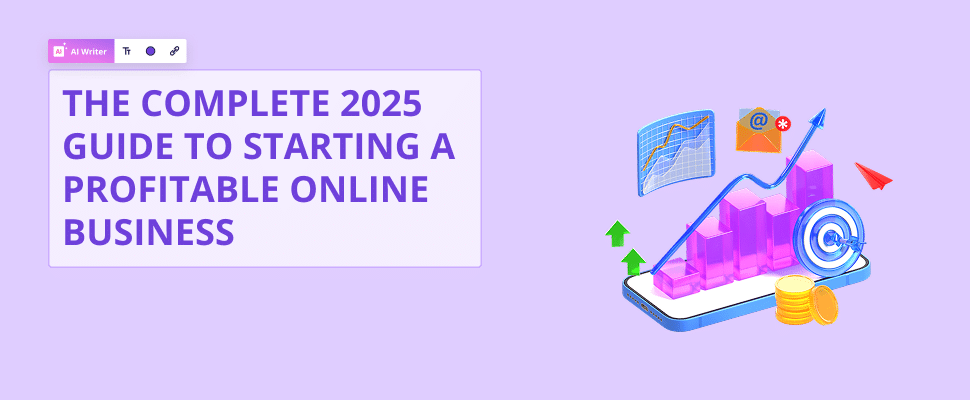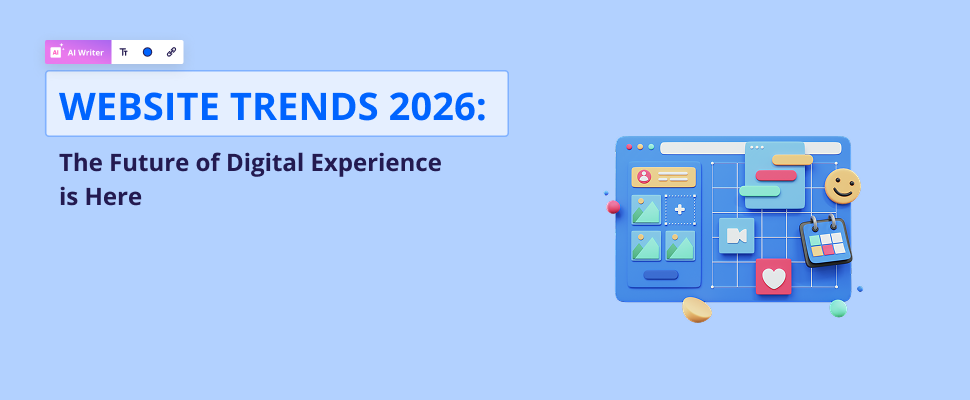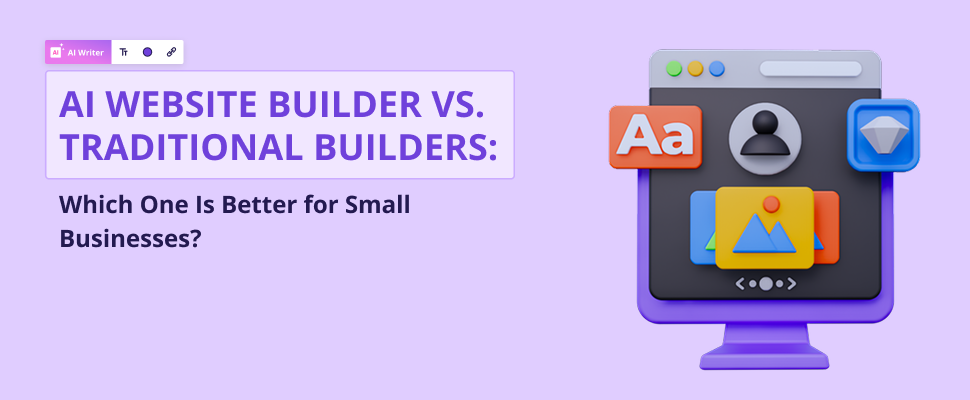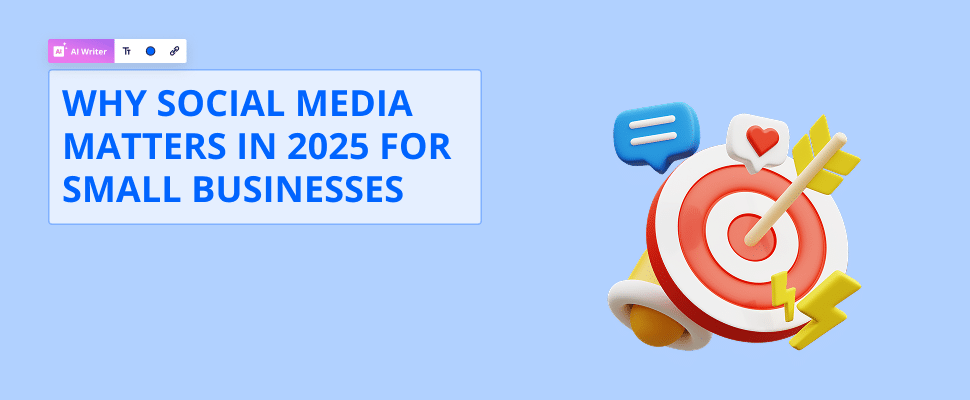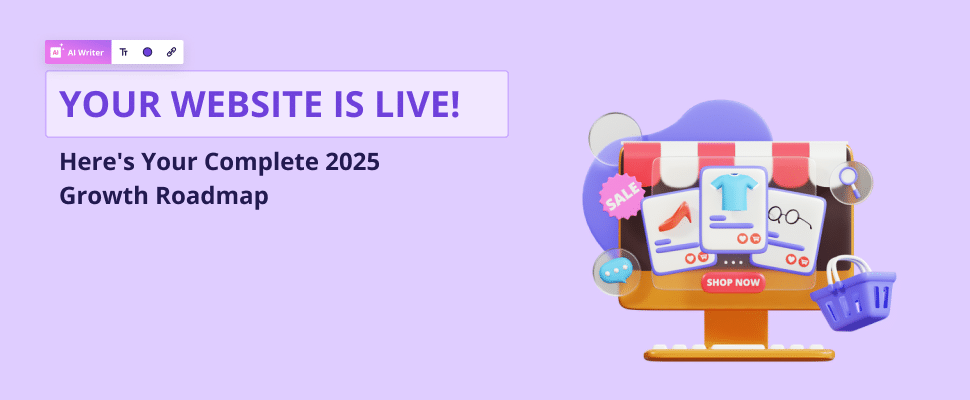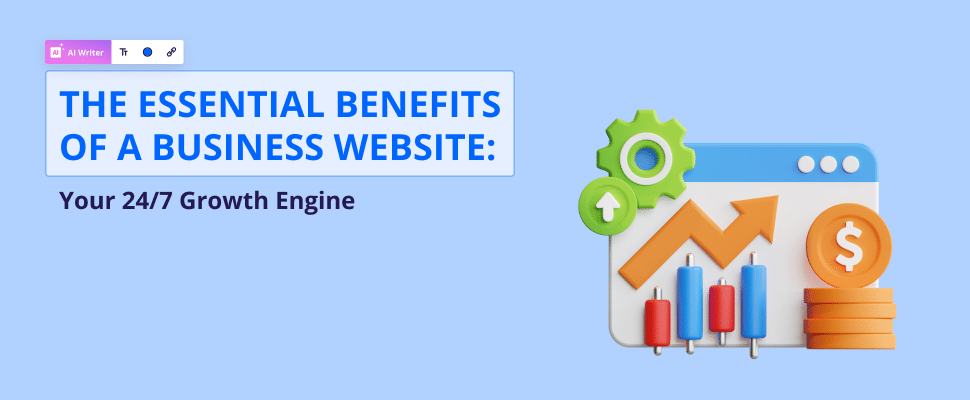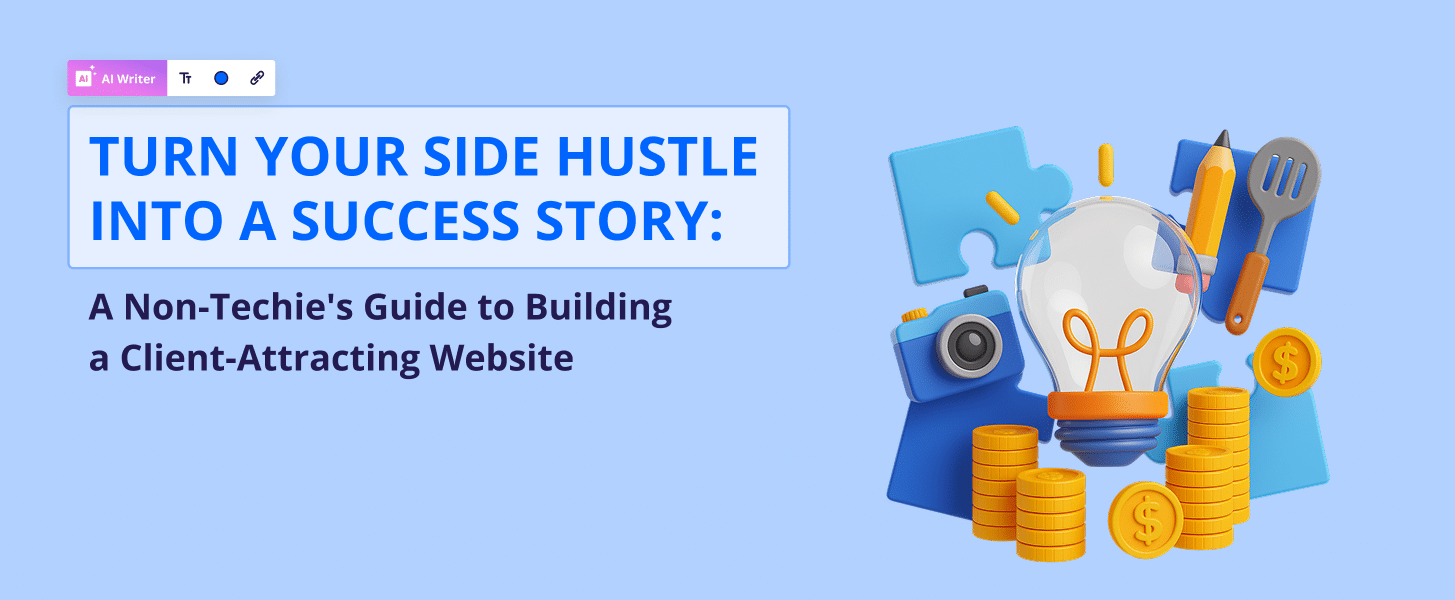
The 8 Technology Trends Reshaping Business in 2025
23 min to read
- AI and trust are core
- Speed & experience win
- Start with secure basics
Focus on AI for intelligence and Blockchain/Security for building digital trust.
Use 5G/Edge for speed and XR for immersive customer experiences.
Begin digital transformation by implementing foundational, secure tools first.
The future isn’t just approaching – it is unfolding all around us. While we may still be waiting for flying cars or Mars colonies, today’s technological advances are already transforming the way we live, work, and run businesses.
Whether you are leading a startup or managing an established brand, it is no longer a question of if you should embrace technology – but how. From AI assistants and automation to data security and wise infrastructure, staying ahead means staying informed.
Let’s explore eight key tech trends redefining success in 2025 and beyond!
Table of Contents
1. Artificial Intelligence (AI) & Machine Learning
Once confined to science fiction, AI is now at the heart of digital transformation. It is reshaping every aspect of business – from marketing to operations. If the past decade was about going digital, the next one is about going intelligent. AI has moved out of research labs and into our pockets, homes, and offices. Whether you are running a global company or just starting a side hustle, chances are you are already relying on AI more than you think.
What’s Happening in 2025:
AI adoption is accelerating:
• 90% of leading companies are actively investing in AI
• The global AI market is valued at $450 billion
• Even 43% of small businesses now use AI tools
“What once felt futuristic is now a daily toolset.”
How Businesses Are Using AI:
Marketing & Content Creation: From AI-powered website builders like Hocoos to automated blog generation, businesses are creating content faster and tailoring it to each customer. SEO strategies, too, are increasingly driven by AI.
Customer Service: AI enhances support with 24/7 chatbots, automated email replies, and even real-time sentiment analysis. Customers receive instant, personalized responses – boosting satisfaction and loyalty.

Operations & Analytics: AI tools streamline inventory management, forecast demand, automate repetitive tasks, and uncover insights from data – helping businesses make faster, smarter decisions.
Quick Start Tip:
Select one tool that solves your biggest challenge. For many businesses, building a strong online presence is crucial. That’s where AI platforms like Hocoos can help – allowing you to launch a professional website in minutes.
2. Internet of Things (IoT)
The IoT revolution is no longer limited to smart homes. With billions of devices now connected, businesses across industries are leveraging IoT to improve efficiency, reduce costs, and enhance customer experiences. In other words, your coffee machine is not the only thing that’s smart anymore. From factory floors to clothing stores, connectivity is transforming how things get done.
What’s Happening in 2025:
• Over 27 billion IoT devices are now online
• 127 new devices connect to the internet every second
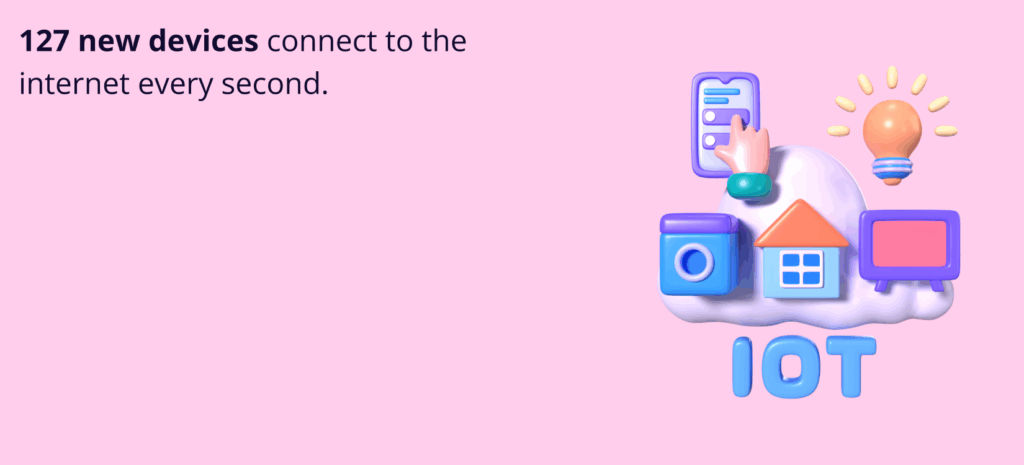
• The global IoT market is valued at $1.6 trillion
“That’s not just growth – it is an explosion. Sensors, trackers, and smart gadgets are reshaping entire industries.”
How Businesses Are Using IoT:
Retail: Smart inventory tracking, automated checkouts, and real-time customer behavior analysis optimize both operations and supply chains.
Service-Based Industries: IoT powers predictive maintenance, remote monitoring, and energy-saving systems, improving uptime and safety.
Customer Experience: Businesses deliver more personalized, adaptive services through real-time data, automated reordering, and customized environments.
Actionable Insight:
IoT implementation leads to an average 25% reduction in operational and maintenance costs, making it not just innovative but profitable.
3. Extended Reality (XR): VR, AR, and the Metaverse
The line between physical and digital is vanishing. XR technologies (virtual reality, augmented reality, and the metaverse) are transforming customer engagement and employee training. What used to be the stuff of sci-fi movies is now helping retailers sell couches and doctors perform surgery.
What’s Happening in 2025:
• XR market value: $65 billion
• 70% of consumers expect AR/VR to become mainstream
• Business adoption is growing 56% annually
“We are stepping into virtual spaces just like we once logged onto the internet. But this time, it is 3D – and you can walk around.”
How Businesses Are Using XR:
Virtual Showrooms & Sales: AR/VR enables virtual product try-ons, immersive catalogs, and remote consultations.
Training & Collaboration: Teams can train, simulate scenarios, and collaborate in immersive digital spaces.
Customer Engagement: XR elevates brand experiences through interactive ads, virtual events, and 3D product visualizations.
Actionable Insight:
A small furniture retailer increased sales by 35% after introducing AR-based product visualization tools – showing just how impactful immersive tech can be.
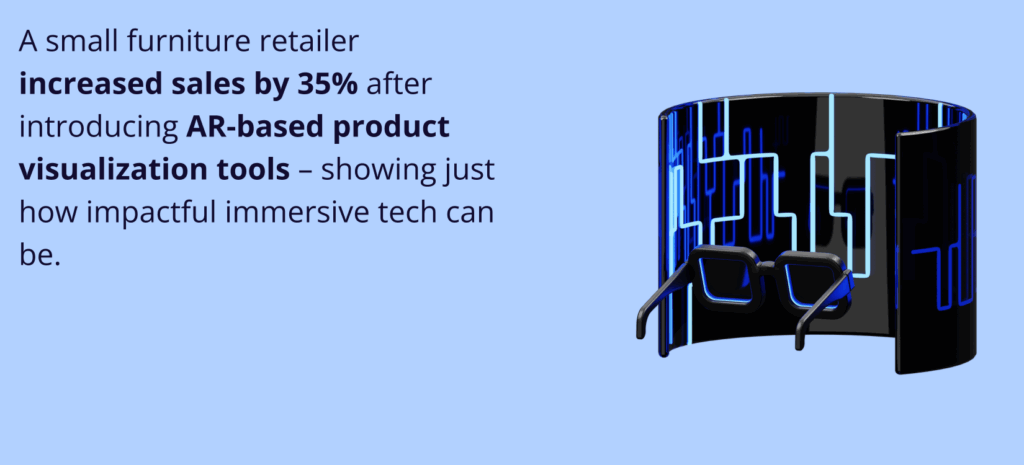
4. Blockchain & Web3
Blockchain is transforming business by making transactions, contracts, and data more transparent, secure, and efficient – far beyond cryptocurrency. Although it might still sound like a buzzword, blockchain is quietly becoming the backbone of digital trust.
What’s Happening in 2025:
• 65% of enterprise businesses are actively using blockchain
• The global blockchain market is valued at $176 billion
• Transaction costs have dropped by up to 90%
“We are moving toward a world where trust is built into the code itself.”
How Businesses Are Using Blockchain:
Financial Operations: Smart contracts automate agreements, enabling secure payments and improving supply chain management.
Data Security: Immutable, decentralized records support identity verification and help prevent fraud.
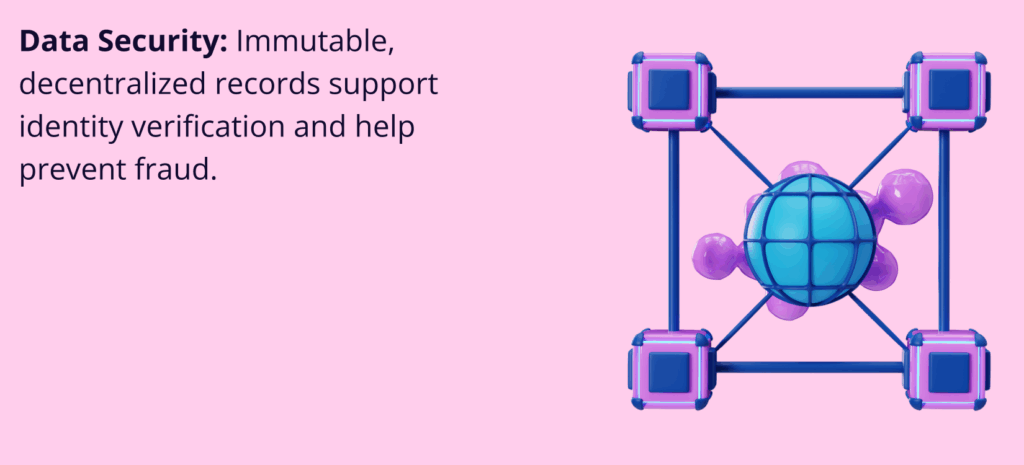
Customer Trust: Blockchain enables verified authenticity, digital ownership, and transparent loyalty programs.
Quick Start Tip:
Begin with blockchain-based payment systems – they are an easy way to cut transaction fees and increase security from day 1.
5. Edge Computing & 5G
The combination of edge computing and 5G connectivity is unlocking ultra-fast, low-latency digital experiences and smarter data processing. Remember the spinning buffering wheel? Say goodbye to that.
What’s Happening in 2025:
• 75% of the world now has 5G coverage
• The edge computing market is valued at $87 billion
• Companies report up to 50% reduction in data latency
“This isn’t just about speed – it’s about enabling the real-time economy.”
How Businesses Are Using Edge Computing & 5G:
Enhanced Performance: Local data processing boosts speed and reliability for digital services.
Smarter Applications: Enables real-time analytics, video streaming, and IoT device control at scale.
Cost Efficiency: Reduces cloud dependency, bandwidth use, and infrastructure costs.
Actionable Insight:
Businesses adopting edge computing face up to 35% faster application performance, turning speed into a serious competitive edge.
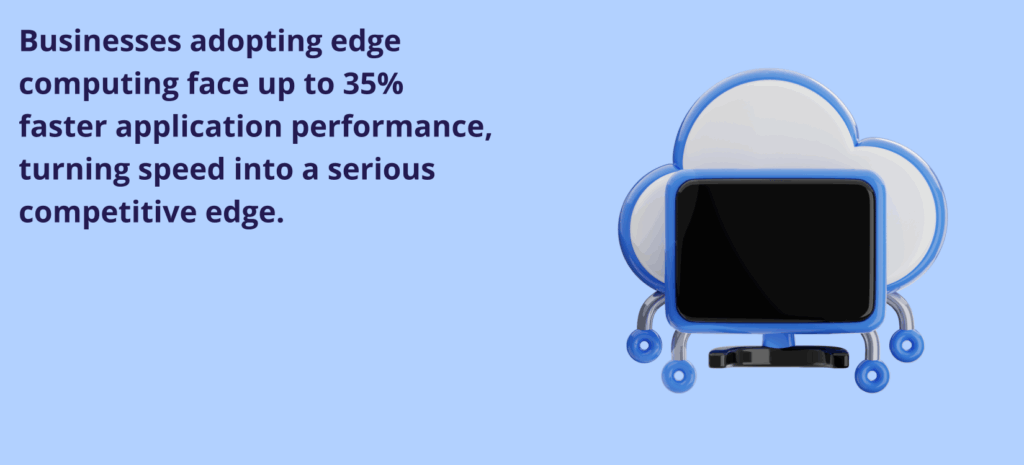
6. Cybersecurity & Privacy
As digital adoption rises, so do cyber threats. Cybersecurity is now a business survival requirement, not a luxury. It’s no longer just about firewalls. It’s about trust, continuity, and protecting your brand’s reputation.
What’s Happening in 2025:
• Cyberattacks have surged by 70%
• Cybercrime costs total $10.5 trillion annually
• 60% of small businesses face ongoing cyber threats
“One wrong click can shut you down for days – or worse, damage customer trust forever.”
How Businesses Are Addressing Cybersecurity:
Foundational Protection: Use SSL certificates, secure passwords, regular backups, and employee training.
Data Privacy: Encrypt sensitive data, enforce access controls, and comply with regulations.
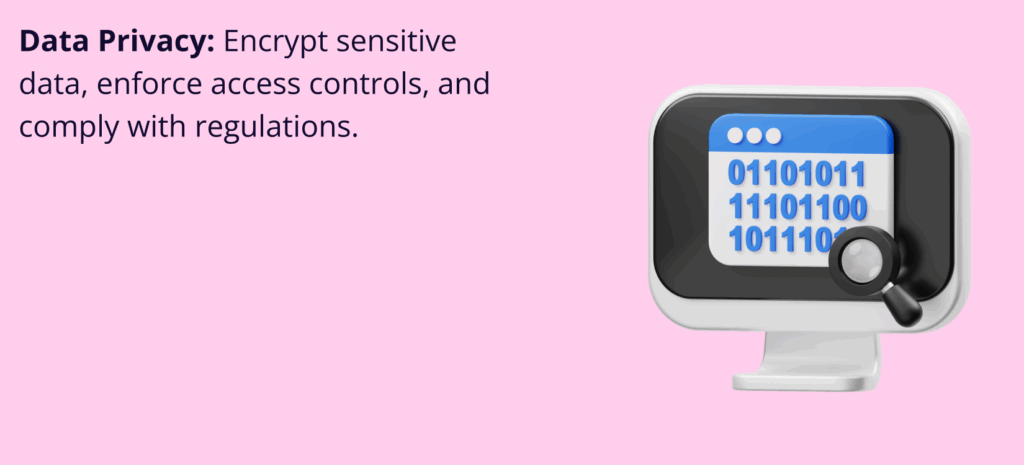
Threat Monitoring: Detect attacks early, log activity, and respond promptly.
Quick Start Tip:
Instead of starting from scratch, use a secure website builder, such as Hocoos, which comes with SSL and security features that are essential to the safety of your website.
7. Quantum Computing
Quantum computing is revolutionizing data processing. It achieves speeds millions of times faster than regular computers, hence making it possible to have a breakthrough in all sectors. Yes, it’s still very “green” – but the speed of transformation is surprising.
What’s Happening in 2025:
• Quantum processors have surpassed 1,000 qubits
• The market is valued at $850 million
• Quantum computers can be up to 158 million times faster than classical machines
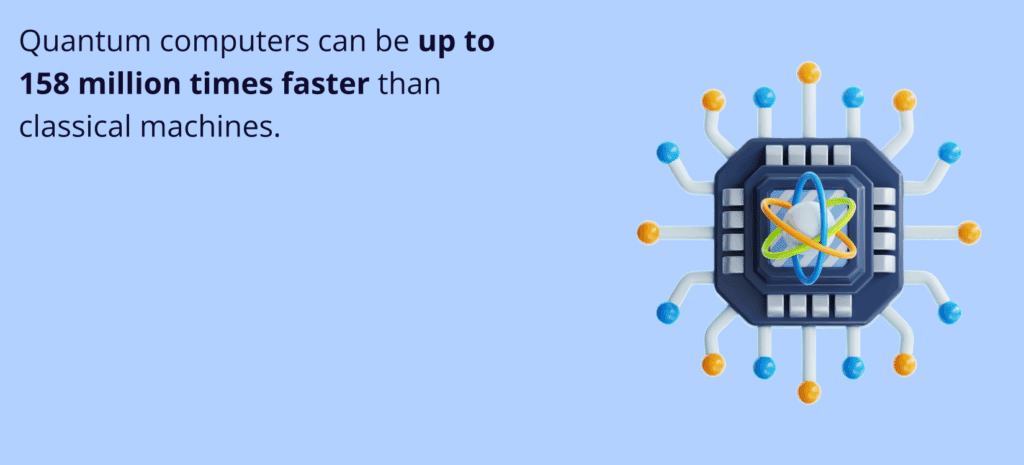
“That’s not a typo. Google’s quantum processor once solved a problem in minutes – one that would take a classical machine 10,000 years.”
How Businesses Are Preparing for Quantum Computing:
Optimization: Gets better logistics, financial modeling, and energy efficiency.
Scientific Research: Opens up new vistas in drug discovery, climate modeling, and materials science.
Security: Opens the door to new encryption and authentication techniques.
Actionable Insight:
Although most companies will not immediately switch to quantum tools, the best strategy is to be ready for the change and stay up to date with the news in this field.
8. Sustainable Tech
Sustainability is a business imperative. Green technologies help cut costs, reduce environmental impact, and meet rising consumer expectations. In today’s world, being eco-conscious isn’t just great – it’s non-negotiable.
What’s Happening in 2025:
• 45% of companies have defined sustainability targets
• The green tech market is worth $480 billion
• Tech-driven energy management can reduce costs by 30%
“Planet-friendly practices are also proving to be wallet-friendly.”
How Businesses Are Using Sustainable Tech:
Energy Efficiency: The history of integrating smart buildings and renewable energy may be the ultimate example of reducing waste and costs.
Sustainable Operations: The use of digital workflows has reduced paper usage and encouraged remote work.
Green Branding: One method to ensure genuine consumer trust is to track carbon emissions along with eco-certification, which are two ways to achieve transparency.

Quick Start Tip:
Start small with digital transformation – going paperless and automating energy monitoring delivers real results quickly.
Taking Action: Your Technology Roadmap
You do not need to do everything new in technology one time, and, to be honest, it would be better if you didn’t. A sharp technology strategy starts with insight, expands through targeted action, and continues to evolve as your company grows.

Here’s how to move from awareness to action:
Step 1
Before going full throttle into new tools, it is essential to take a step back. Audit your current tech stack, identify recurring issues, and ask yourself: Is this still working for us? The foundation of this stage is setting the goal of what success for your business would look like, rather than just following whatever is trending in the market. Regardless, it is obsolete software, poor integrations, or manual processes that are dragging you down; getting clear at this point will empower you to set up priority action plans that are grounded in your actual business needs.
Step 2
You don’t have to do a “total turnaround” of your business in a single night. Lay the groundwork with foundational technology that supports your immediate goals, like a modern website, e-commerce tools, or basic automation. Small wins are never insignificant. Once these basic skills are in place and working, you will be ready to move on to more complex systems. The key is momentum, not perfection.
Step 3
Even the most perfect tools require adjusting. Opt for platforms that align with your strategy, not just what is currently trending. Ensure that your team feels empowered rather than overwhelmed, and always have a space to check what is working (and what is not). Technology should be able to keep up with you – so consider the implementation as a continuous process, not a one-time action.
Begin Your Digital Transformation Today
It’s easy to get caught up in the buzzwords – “digital transformation,” “AI disruption,” “future-proofing” – but at the heart of it, transformation means adapting your business to serve your customers better.
With Hocoos’ AI-powered website builder, you can:
- Launch a professional website in minutes – no design or coding needed
- Activate built-in security features – so your business and data stay protected
- Automate everyday business tasks – from customer interactions to booking and payments
- Scale your online presence – grow your site as your business evolves
Future-proofing starts now!
Create your free website with Hocoos
It’s not about having the most technology – it’s about using the right technology most smartly.
Start strong. Start today.
Frequently Asked Questions (FAQs)
How is AI relevant for a small or non-tech business right now?
AI is now accessible and affordable, primarily used to automate repetitive tasks in marketing, customer service (chatbots), and operations. This frees up human staff to focus on strategy and personal customer relationships, boosting both efficiency and satisfaction.
What concrete benefits can Extended Reality (XR) offer beyond gaming?
Businesses use XR (VR/AR) to transform employee training through risk-free, immersive simulations that boost skill retention. It also revolutionizes sales and retail by letting customers virtually “try on” or visualize products in their own space, increasing purchase confidence and reducing returns.
Is Blockchain only for cryptocurrency, or is it useful for my established business?
Blockchain is far more than crypto; it is a critical tool for digital trust and transparency. It is used to automate agreements via smart contracts, provide immutable supply chain tracking, and enhance data security and identity verification.
How does Sustainable Tech actually save my business money?
Sustainable technologies improve profitability by focusing on resource efficiency, not just eco-consciousness. Implementing smart buildings, automating energy management, and going paperless with digital workflows can significantly reduce operational and energy costs.
What is the single best first step for a business starting its digital transformation?
The best first step is to conduct a thorough audit of your current pain points and implement one foundational, modern, and secure tool that solves the biggest immediate challenge. For many, this is launching a secure, professional online presence using a modern website builder.
FOLLOW us



